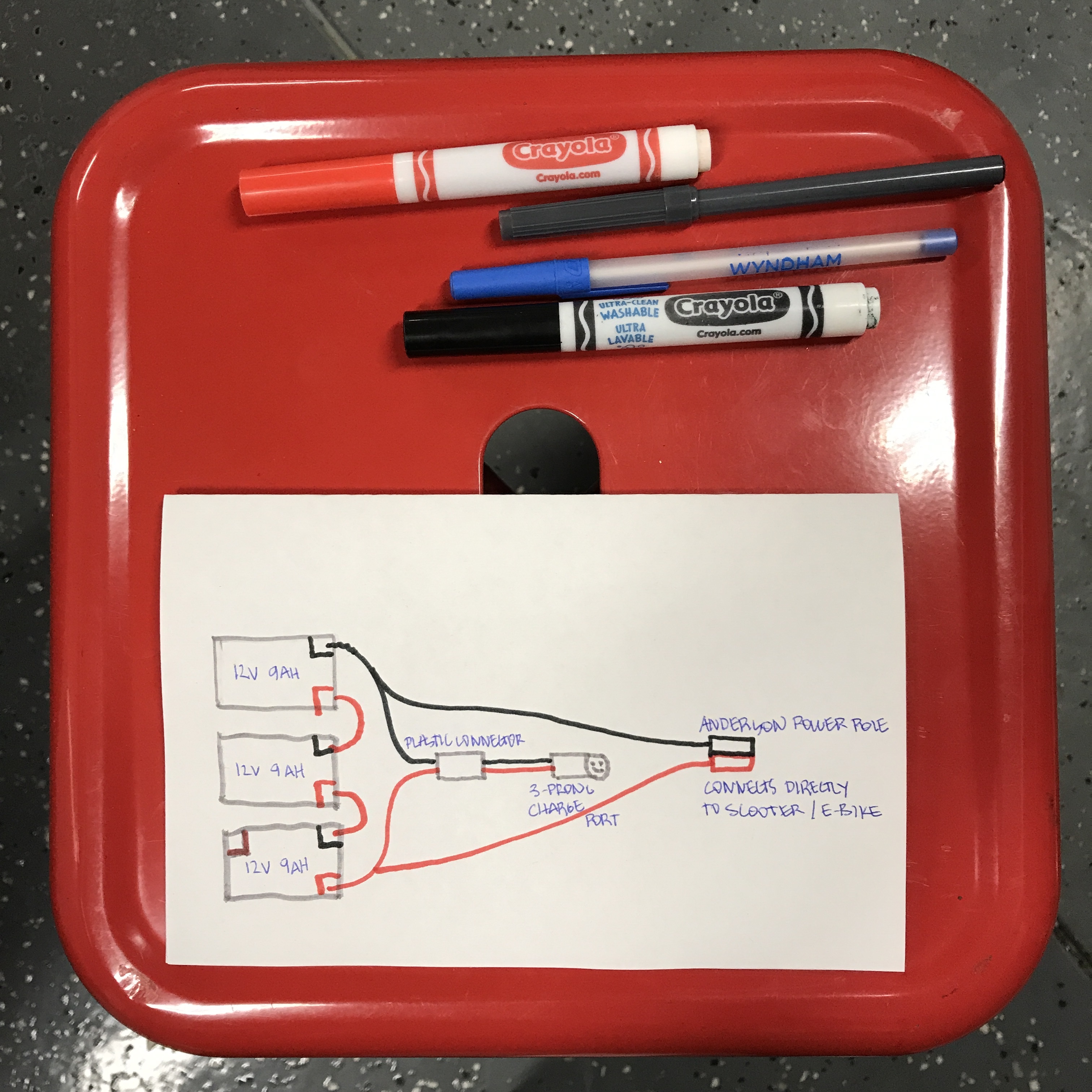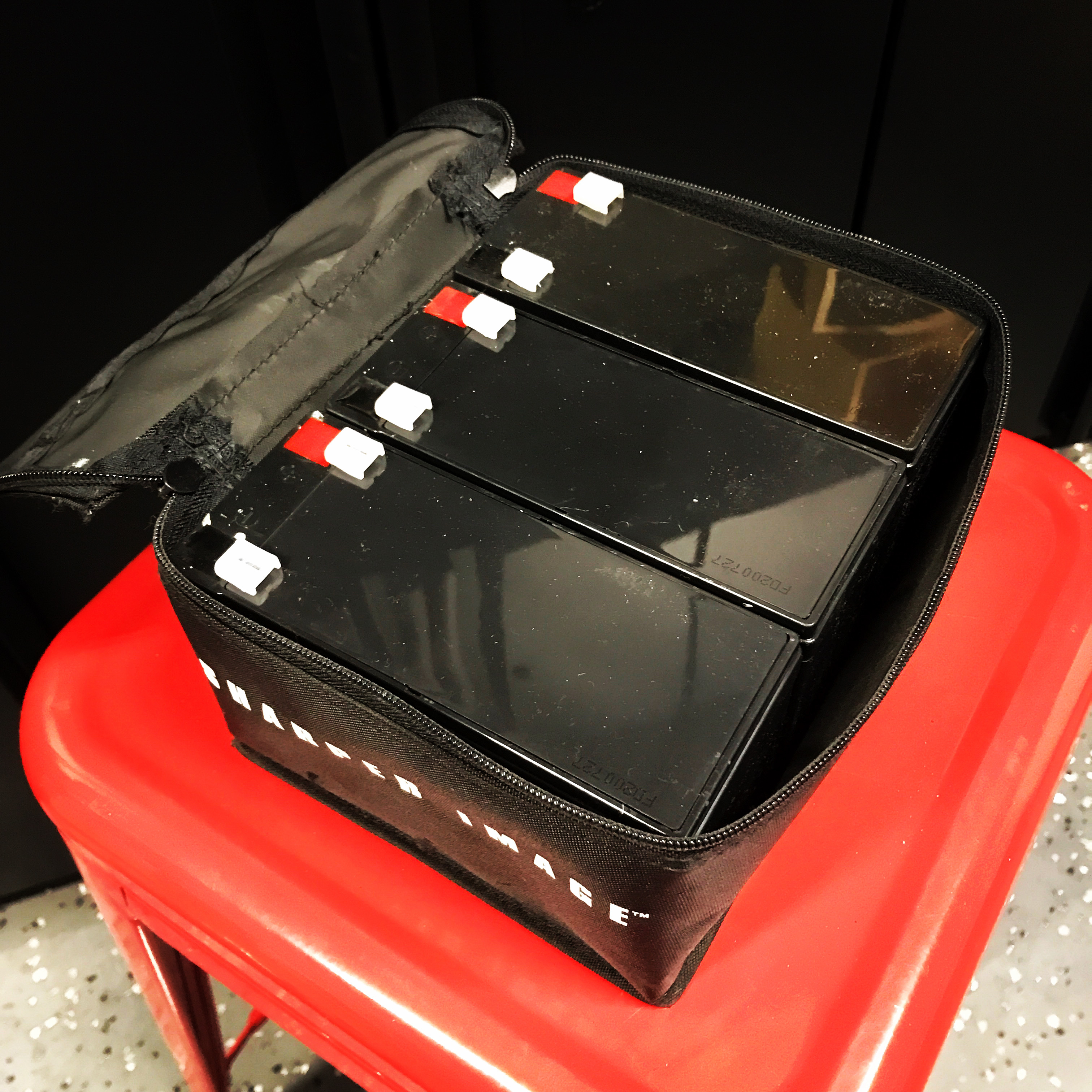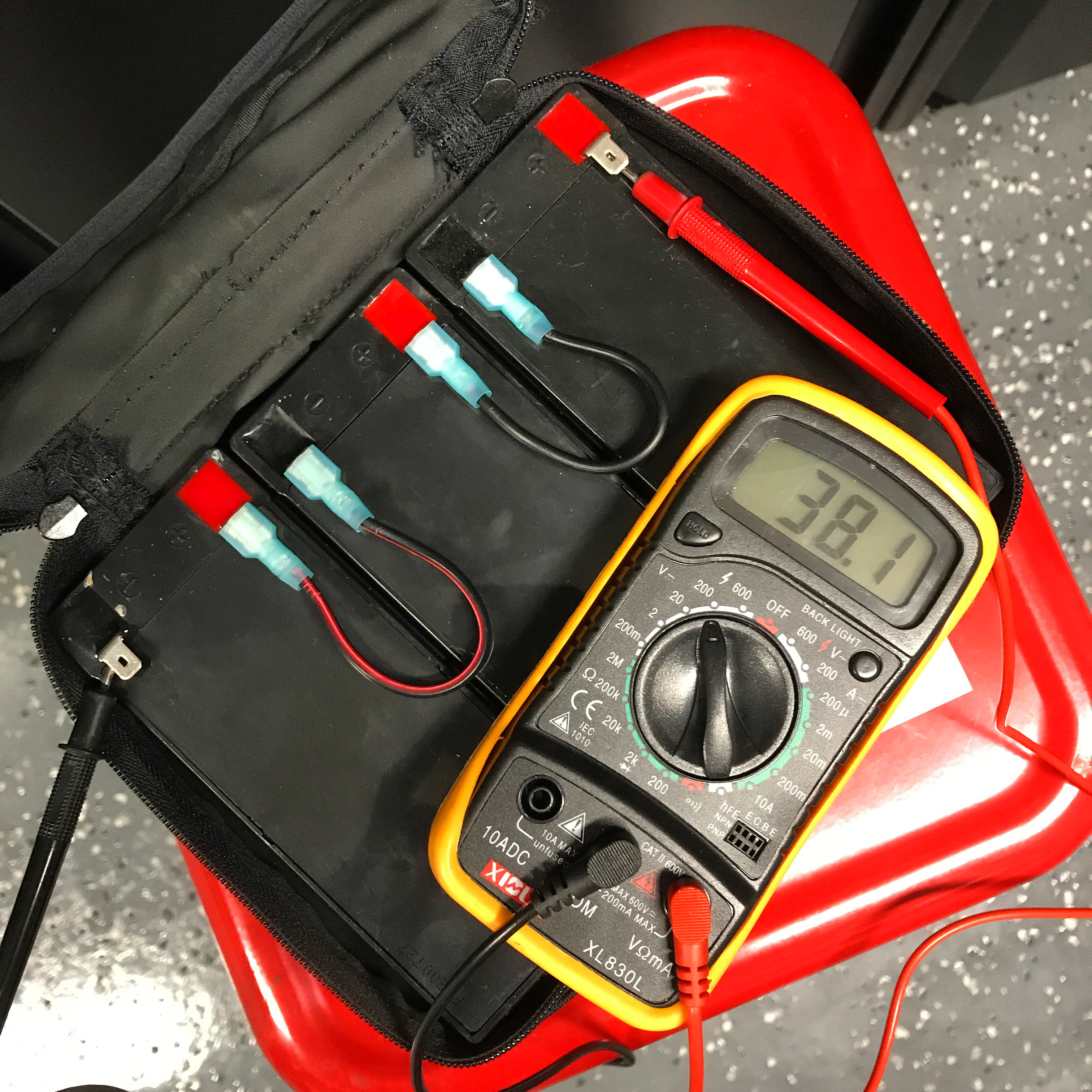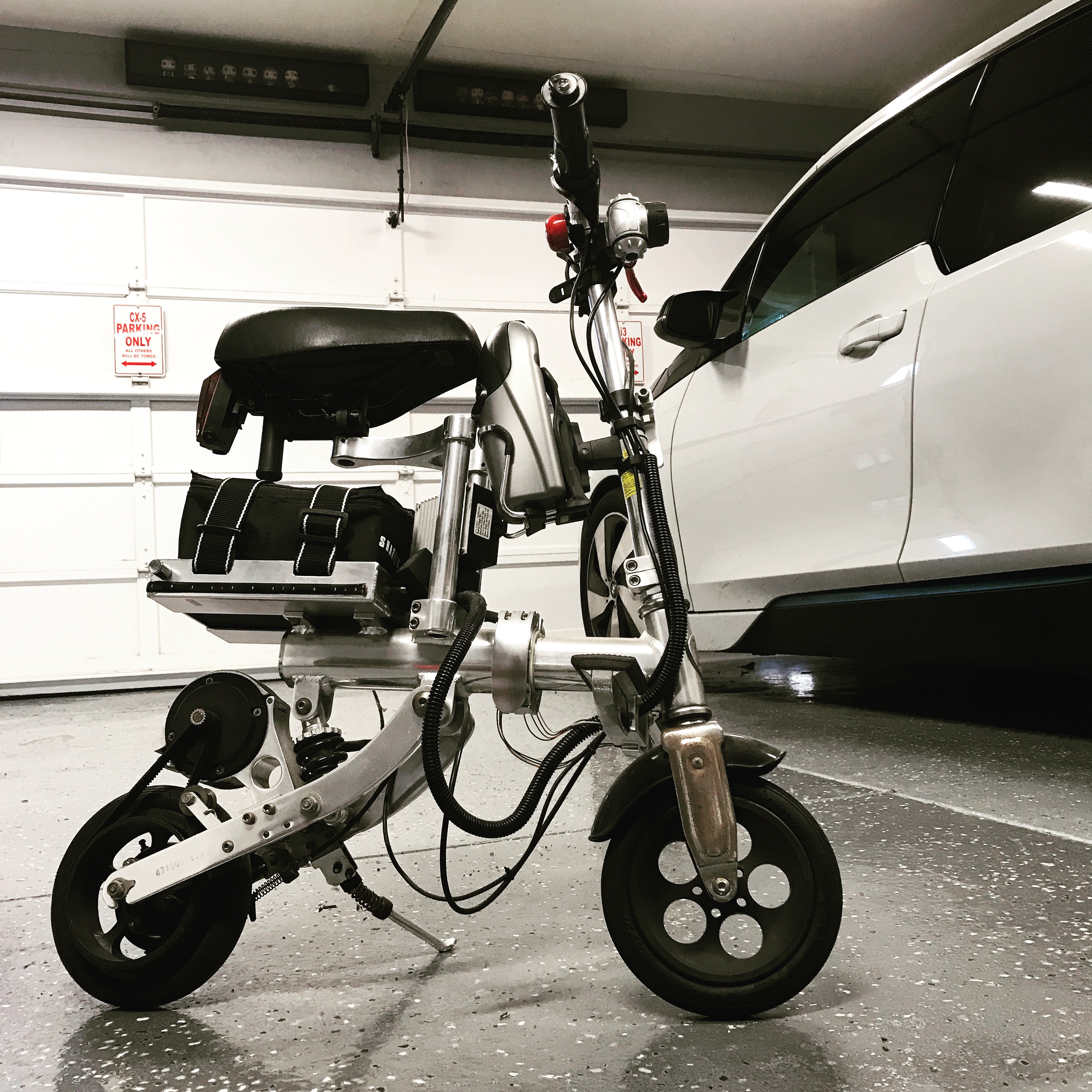kmxtornado
10 kW
Trying to revive this old guy and hoping you guys can help me out:
https://www.youtube.com/watch?v=dwBNZ0LoXIo
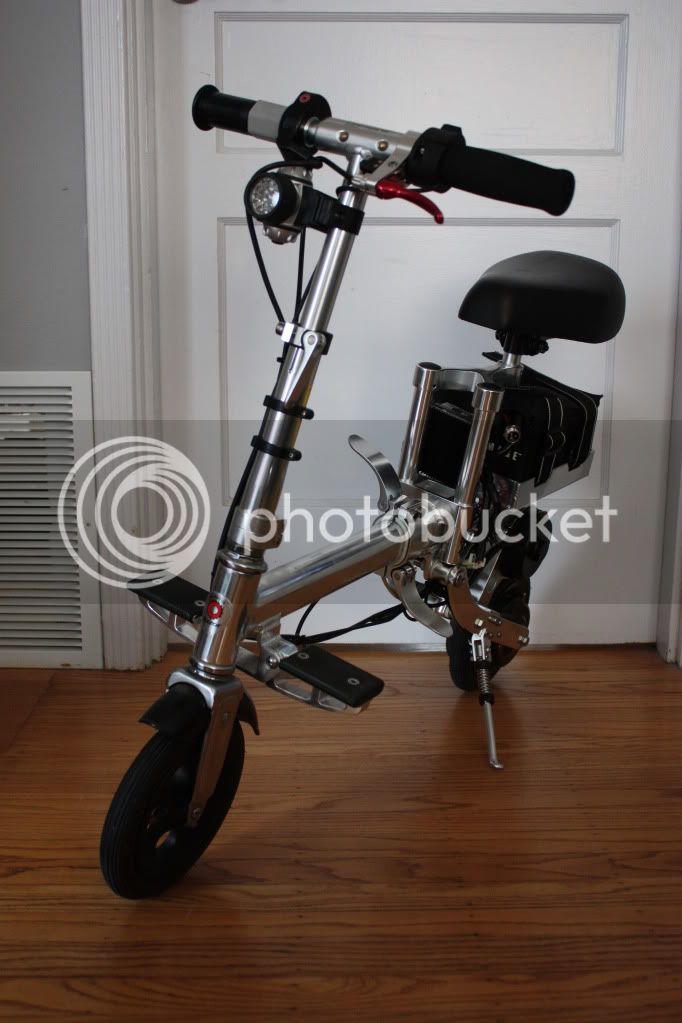
My LiPo battery went bad way back when and I'm replacing the setup with (3) 12v SLA batteries. I know how to connect them in series (do I really need 12AWG wires), but I'm hoping you guys can help me with a wiring diagram on how to charge it.
My controller on the scooter already has anderson power poles so I'll need to use anderson power poles for the 36v battery. It would essentially look like this but with (3) 12volts:
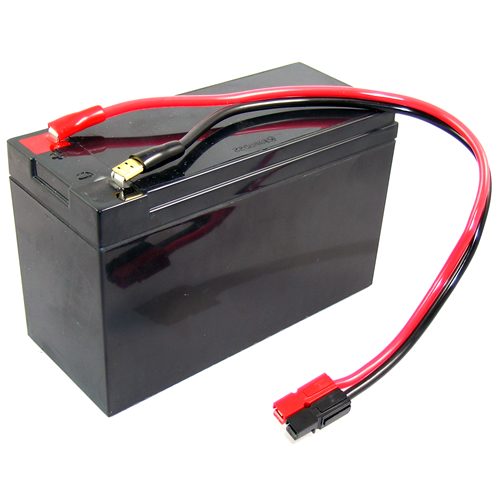
Get ready for the stupid question, "How do I then charge it?"
1. I can't simply build or buy a 36v charger with anderson pole connectors right? I figure anderson power poles aren't rated high enough to take a charge (but that makes me wonder why it's okay to discharge through anderson power poles to power the scooter). Or maybe I'm way off and it's totally okay.
2. If it's not, then perhaps another connector to charge, such as a 3-prong charger port like this? https://www.monsterscooterparts.com/36v-3prong-charger.html
https://www.youtube.com/watch?v=dwBNZ0LoXIo

My LiPo battery went bad way back when and I'm replacing the setup with (3) 12v SLA batteries. I know how to connect them in series (do I really need 12AWG wires), but I'm hoping you guys can help me with a wiring diagram on how to charge it.
My controller on the scooter already has anderson power poles so I'll need to use anderson power poles for the 36v battery. It would essentially look like this but with (3) 12volts:

Get ready for the stupid question, "How do I then charge it?"
1. I can't simply build or buy a 36v charger with anderson pole connectors right? I figure anderson power poles aren't rated high enough to take a charge (but that makes me wonder why it's okay to discharge through anderson power poles to power the scooter). Or maybe I'm way off and it's totally okay.
2. If it's not, then perhaps another connector to charge, such as a 3-prong charger port like this? https://www.monsterscooterparts.com/36v-3prong-charger.html


